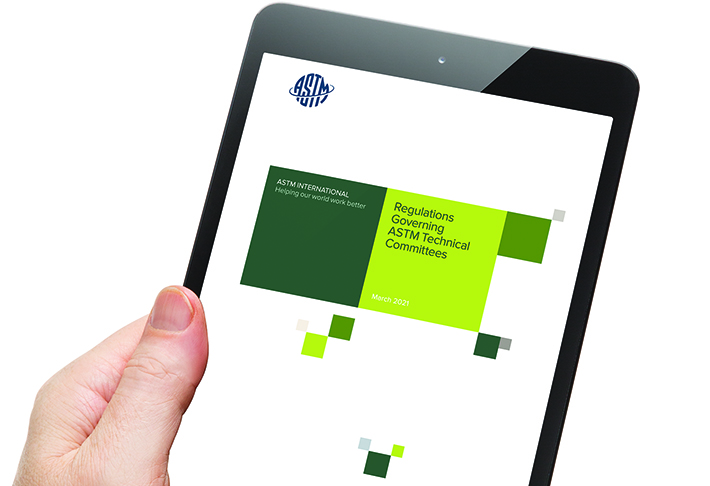
How To: Define a Standard
The word “standard” is commonly used in daily language, so much so that people do not always reflect on its definition. Even in the standards-development community, the term can function in casual conversation as a catch-all for several types of standards.
ASTM International’s Regulations Governing ASTM Technical Committees ( “Green Book”) defines a standard as “A document that has been developed and established within the consensus principles of the Society and that meets the approval requirements of ASTM procedures and regulations.” This definition specifies both a process – the consensus-building, deliberative approach followed by committees – and a document, an actual standard.
The Green Book further defines six distinct standard types, offered with the intention of providing technical committee members and users of standards flexibility to address particular technical requirements and social needs.
Classification
“A systematic arrangement or division of materials, products, systems, or services into groups based on similar characteristics such as origin, composition, properties,
or use.”
Guide
“A compendium of information or series of options that does not recommend a specific course of action.” In the discussion, the Green Book specifies that a guide “increases the awareness of information and approaches in a given subject area.”
Practice
“A set of instructions for performing one or more specific operations that does not produce a test result.” The discussion provides examples of practices, including but not limited to “application, assessment, cleaning, collection, decontamination, inspection, installation, preparation, sampling, screening, and training.”
Specification
“An explicit set of requirements to be satisfied by a material, product, system or service.” The Regulations give examples including “physical, mechanical, or chemical properties, and safety, quality, or performance criteria. A specification identifies the test methods for determining whether each of the requirements is satisfied.”
Terminology
“A document comprising definitions of terms; explanations of symbols, abbreviations, or acronyms.”
Test Method
“A definitive procedure that produces a test result.” Discussion offers examples including “identification, measurement, and evaluation of one or more qualities, characteristics, or properties.” It also adds that precision and bias statements should be reported at the end of test methods, and further points readers to section A21 (“Precision and Bias”) in Form and Style for ASTM Standards (the “Blue Book”). ■
 SN Home
SN Home Archive
Archive Advertisers
Advertisers Masthead
Masthead RateCard
RateCard Subscribe
Subscribe Email Editor
Email Editor